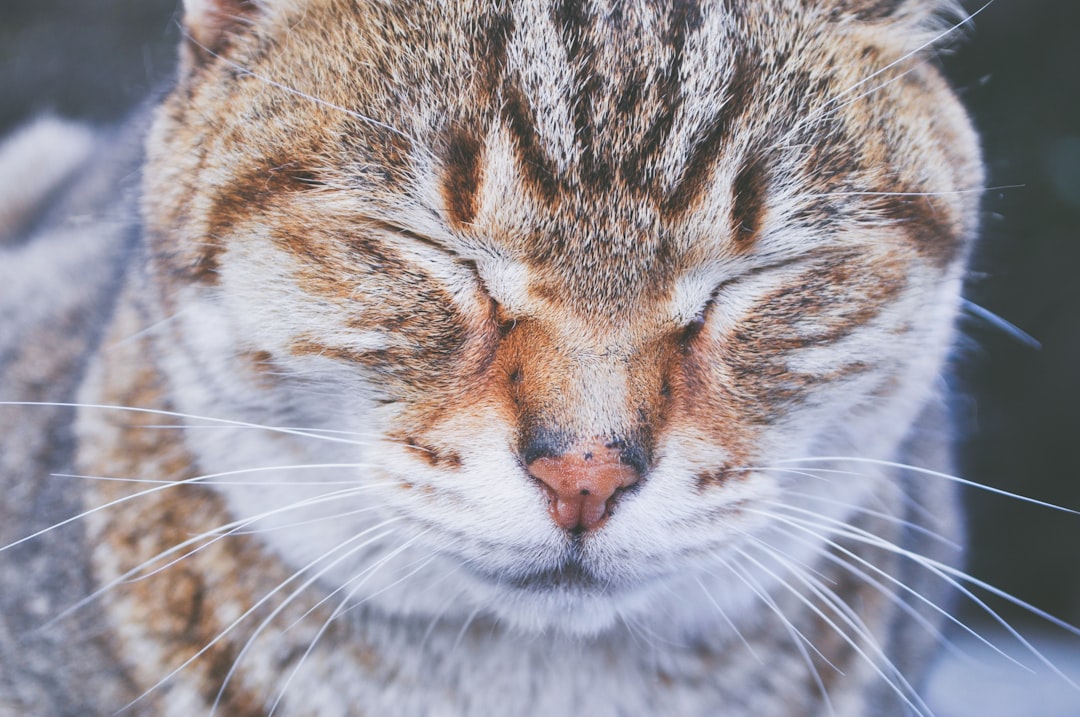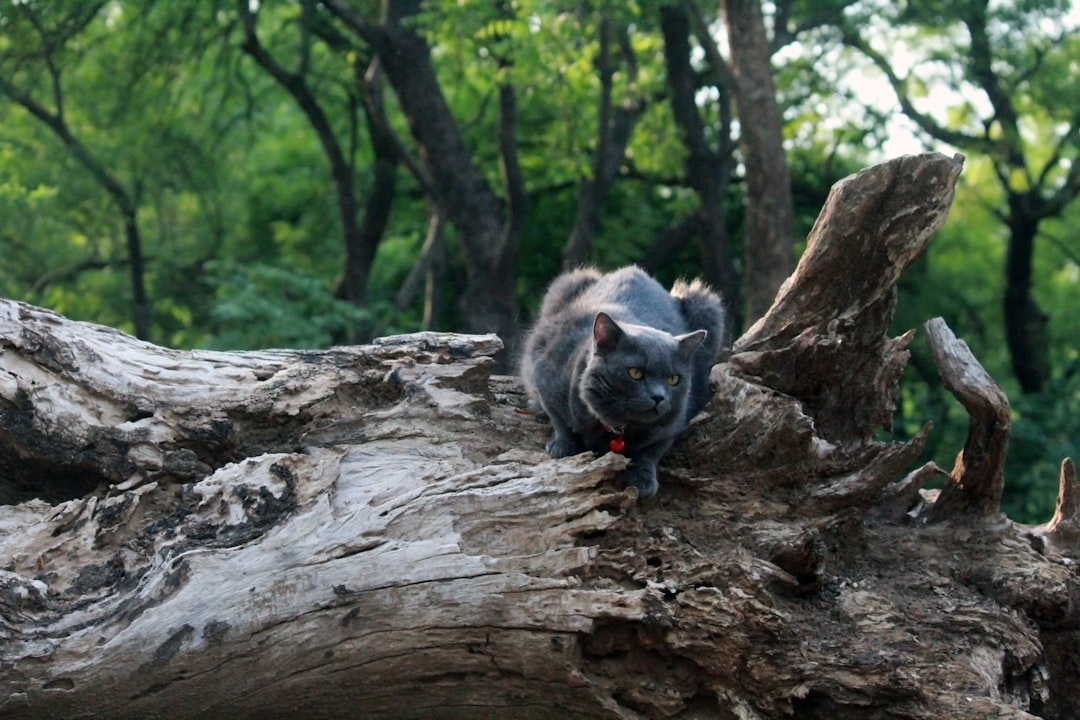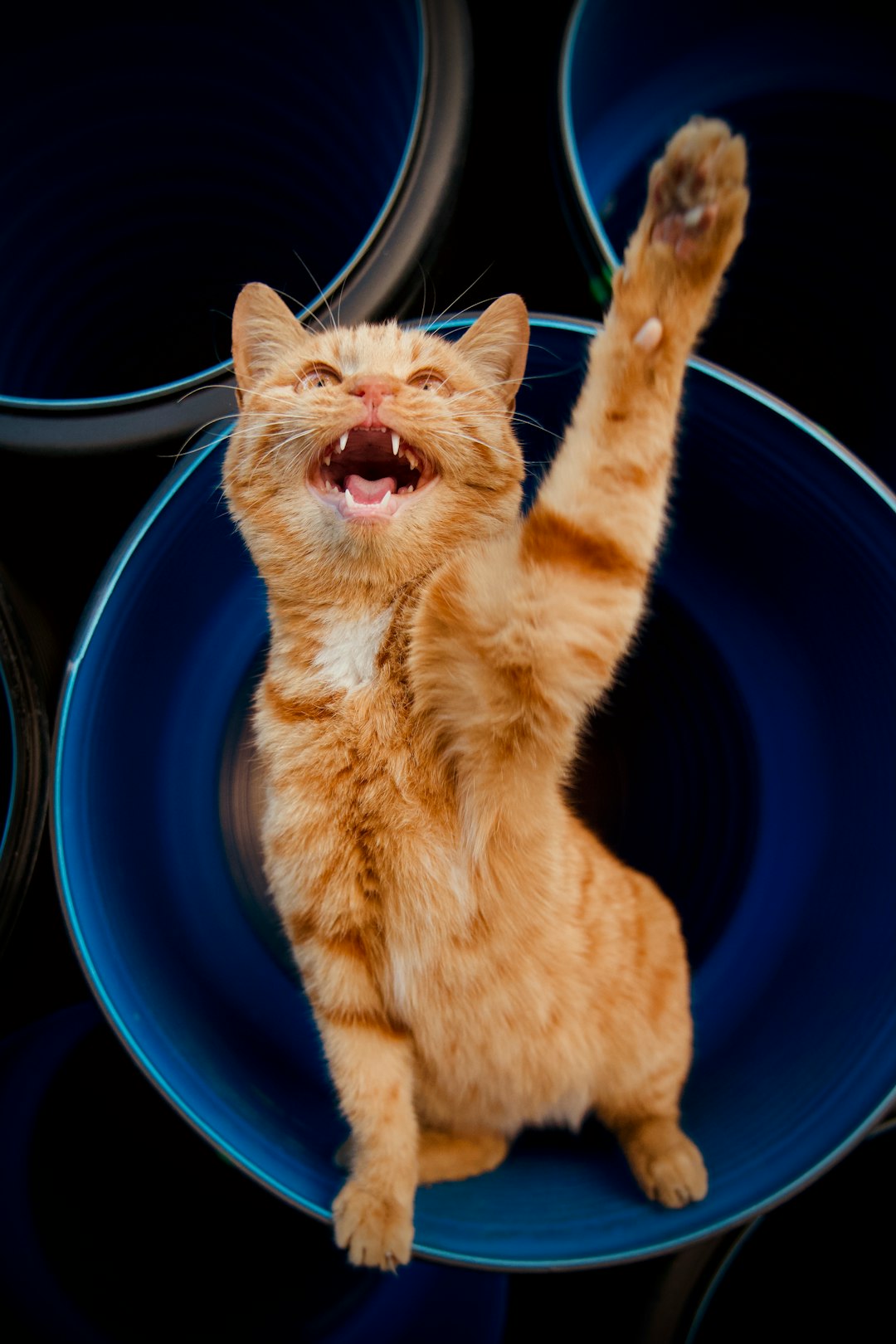Navigating the world of feline companions brings both joy and challenges, especially when it comes to managing their behavior in stressful situations. Many cat owners find themselves wondering about the best ways to ensure safety during trips to the vet or handling anxious cats. One effective solution that often surfaces in these discussions is the muzzle for a cat. While this might sound intimidating, understanding the appropriate contexts and methods for using a muzzle can significantly enhance your cat’s comfort while ensuring safety for both your pet and those around them. In this comprehensive guide, we will explore the nuances of cat behavior, discuss the different types of muzzles available, and provide insights into when and how to use a muzzle safely and effectively.
Understanding Cat Behavior
Understanding cat behavior is crucial for any cat owner, especially when considering the muzzle for a cat. Cats, being naturally independent and sometimes unpredictable creatures, may exhibit behaviors that warrant the careful use of a muzzle.
Why Cats May Need a Muzzle
There are several situations where a muzzle can prove beneficial for the safety of both the cat and others. These include:
| Situation | Explanation |
|---|---|
| Vet Visits | Cats can become anxious or aggressive during vet exams, making a muzzle a safety tool. |
| Grooming | Regular grooming can be stressful for some cats; a muzzle can help manage their behavior. |
| Travel | When traveling, especially in unfamiliar environments, a muzzle may help reduce stress. |
| Behavioral Issues | For cats with a history of aggression or anxiety, a muzzle can provide a secure solution. |
Signs of Stress in Cats
Recognizing signs of stress in your cat is essential before using a muzzle. Here are some signs to watch for:
| Sign | Description |
|---|---|
| Hiding | If your cat retreats to a safe space, this can indicate they feel threatened. |
| Aggression | Hissing, growling, or swatting are clear indicators of a stressed cat. |
| Vocalization | Increased meowing or yowling can signify anxiety or distress. |
| Body Language | Ears back, puffed up fur, or a twitching tail suggest heightened stress levels. |
By understanding these aspects of cat behavior, you will be better equipped to decide when and how to safely use a muzzle for a cat, ensuring their comfort and safety during stressful situations.
Types of Muzzles for Cats
When considering a muzzle for a cat, it’s essential to understand the different types available to ensure comfort and effectiveness. Cat muzzles generally fall into two main categories: soft and hard muzzles. Each type serves distinct purposes and has unique features suited for various situations.
Soft vs. Hard Muzzles
| Type | Description | Suitable For |
|---|---|---|
| Soft Muzzles | Made from fabric or neoprene, these muzzles tend to be more comfortable and flexible for cats. | Grooming, vet visits, and short-term use where comfort is vital. |
| Hard Muzzles | Typically constructed from rigid plastic, hard muzzles offer a more secure fit and prevent biting effectively. | Situations where the cat may pose a danger, such as during medical procedures or aggressive behavior. |
Best Materials for Cat Muzzles
The material of a muzzle significantly affects its suitability. Here are some recommended materials:
| Material | Benefits | Considerations |
|---|---|---|
| Fabric | Lightweight, breathable, and comfortable. | May not prevent biting as effectively. |
| Neoprene | Offers flexibility and durability. | Ensure proper sizing for safety. |
| Plastic | Provides a secure barrier against bites. | Can be uncomfortable for prolonged use. |
When selecting a muzzle for a cat, consider your cat’s temperament and the specific situation you’ll be using it for, ensuring you choose the type and material that will provide comfort and safety.
When to Use a Muzzle on Your Cat
Using a muzzle for a cat can be beneficial in specific scenarios, ensuring both safety and calmness for your feline friend. It’s essential to recognize the right situations where a muzzle can be effectively utilized.
During Vet Visits
Vet visits can be particularly stressful for cats, and a muzzle for a cat can help minimize anxiety. Many cats exhibit fearful behavior when they encounter the sounds and smells of a veterinary clinic. A muzzle can prevent biting or scratching if your cat becomes agitated.
| Benefit | Explanation |
|---|---|
| Safety | Protects veterinary staff and other animals. |
| Reduced stress | Might create a sense of security for some cats. |
| Easier handling | Allows for smoother examination and procedures. |
When Traveling with Your Cat
Travel can be another situation where a muzzle might be necessary. Whether you are taking your cat in a carrier or letting them explore a new environment, a muzzle can keep them calm and prevent sudden escapes. When used during travel, consider the following advantages:
| Advantage | Explanation |
|---|---|
| Minimizes escape risks | Keeps your cat secure during unexpected stops. |
| Encourages calm behavior | Reduces anxiety in unfamiliar surroundings. |
| Facilitates introductions | Helps other pets remain safe during meet-and-greets. |
Harnessing the appropriate moments to use a muzzle is crucial for ensuring both your safety and that of your cat, leading to a more pleasant experience in stressful situations.
How to Choose the Right Muzzle
Choosing the correct muzzle for a cat involves careful consideration of various factors to ensure comfort and effectiveness. The right fit can prevent stress for both you and your feline friend.
Measuring Your Cat for a Muzzle
Accurate measurements are crucial. Use the following steps to measure your cat:
| Measurement | Description |
|---|---|
| Snout Length | Measure from the tip of the nose to the base of the muzzle. |
| Snout Circumference | Measure around the widest part of the snout, allowing for some wiggle room. |
| Neck Circumference | Measure around the neck to ensure a secure fit for any straps. |
Make sure your cat is calm during this process, as they are more likely to provide accurate measurements.
Considerations for Size and Fit
When selecting a muzzle, consider the following points to ensure proper fit:
- Snug but Comfortable: The muzzle should fit snugly without being too tight. You should be able to fit two fingers between the muzzle and your cat’s snout.
- Material: Opt for breathable materials. Mesh muzzles offer comfort, while padded options prevent chafing.
- Accessibility: Ensure that the muzzle allows for drinking and breathing. Some muzzles are open at the bottom, providing more comfort and practicality.
By keeping these factors in mind, you can find the bestmuzzle for a cat that meets their specific needs while ensuring safety and comfort.
Introducing the Muzzle to Your Cat
Introducing a muzzle for a cat can be a daunting task, both for you and your furry friend. However, with the right approach, you can ensure a smooth transition.
Gradual Desensitization Techniques
Before putting the muzzle on your cat, consider these gradual desensitization techniques to make the process less stressful:
| Step | Action |
|---|---|
| Step 1: Introduction | Show the muzzle to your cat without any pressure and let them sniff it while rewarding calm behavior. |
| Step 2: Short Sessions | Allow your cat to wear the muzzle for a few seconds at first. Gradually increase the duration as they get more comfortable. |
| Step 3: Positive Association | Place treats or their favorite toy inside the muzzle to create a positive association with it. |
Positive Reinforcement Strategies
Using positive reinforcement can make all the difference when introducing a muzzle for a cat. Here are some effective strategies:
- Reward With Treats: Each time your cat shows calmness around the muzzle or wears it, offer treats as a reward. This reinforces positive behavior.
- Use Gentle Praise: Along with treats, use a soothing voice to praise your cat. This can encourage them to associate the muzzle with happiness.
- Create a Comfortable Environment: Ensure that the area where you introduce the muzzle is familiar and safe for your cat, which can reduce anxiety and fear.
By using these methods, you can ease your cat into wearing a muzzle, ensuring the experience is calm and positive for both of you.
Correct Use of a Muzzle
Using a muzzle for a cat correctly is crucial to ensure the safety and comfort of your feline friend. Below are essential factors for effectively utilizing a muzzle.
Duration of Use
It is important to limit the duration for which a cat wears a muzzle. Generally, the maximum recommended time is 15 to 30 minutes. Extended use can lead to stress or discomfort. To make this more manageable, consider the following time frames:
| Duration | Activity | Best Practices |
|---|---|---|
| 5 minutes | Initial introduction | Allow the cat to acclimate slowly. |
| 10-15 minutes | Short trips or vet visits | Use as needed, take breaks. |
| Over 30 minutes | Not recommended | Risk of discomfort or anxiety. |
Monitoring Your Cat’s Behavior
While your cat is wearing a muzzle, it’s essential to monitor their behavior closely. Watch for signs of distress, including:
- Vocalizations: Excessive meowing or growling can indicate discomfort.
- Body Language: A tense body posture or attempts to escape should not be ignored.
- Hiding or Retreating: If the cat tries to hide or isolate itself, it’s time to remove the muzzle.
Quick Tips
- Always have a familiar environment when using a muzzle.
- Engage in calming activities while your cat is muzzled, such as gentle petting or soft talking.
- Never leave your cat unattended while wearing a muzzle, as this could lead to accidents or increased anxiety.
In summary, correct use of a muzzle for a cat involves careful timing and monitoring to ensure a positive experience for your pet.
Safety Precautions for Muzzle Use
When using a muzzle for a cat, it’s crucial to take safety precautions to ensure your cat remains comfortable and safe throughout the process. Below are some important factors to consider.
Avoiding Injury or Discomfort
Using a muzzle incorrectly can lead to physical injuries or stress for your cat. To prevent this, always select a muzzle that fits correctly, allowing for natural movement of the mouth and face. Here are some key points to remember:
| Muzzle Type | Comfort Level | Use Case |
|---|---|---|
| Soft Muzzles | Generally recommended for short use | Veterinary visits, groomings |
| Basket Muzzles | Allows for panting and drinking | Long-term wear, outdoor use |
| Cloth Muzzles | May restrict movement | Temporary use, low-stress situations |
Additionally, regularly check for signs of discomfort, such as excessive drooling, pawing at the muzzle, or loud vocalizations. Ensuring that your cat remains calm is key to a positive experience.
Knowing When to Remove the Muzzle
Timing is essential when it comes to the safe use of a muzzle for a cat. It’s important to monitor your cat closely. Here are some signs that it may be time to remove the muzzle:
- Excessive Stress: If your cat is showing signs of significant anxiety, it’s advisable to take off the muzzle.
- Physical Signs: Watch for panting, difficulty breathing, or other physical distress. These may be indicators of discomfort that need immediate attention.
- End of Procedure: Once the vet visit or grooming session is complete, promptly remove the muzzle to allow your cat to relax.
Incorporating these safety measures will help not only protect your feline friend but also foster a more positive experience during necessary situations.
Alternative Solutions to Muzzle Use
When considering a muzzle for a cat, it’s essential to explore alternative solutions that can alleviate stress-related behaviors without the need for restraint. Below are some effective options:
Calming Aids and Products
Many products are available to help calm anxious cats. These can be particularly useful in situations where a muzzle for a cat might be deemed necessary. Here are some popular options:
| Product Type | Description |
|---|---|
| Feliway Diffusers | Releases synthetic feline pheromones to create a soothing environment. |
| Calming Collars | Infused with natural calming ingredients to help reduce anxiety on the go. |
| Herbal Supplements | Natural herbs like chamomile and valerian root can promote relaxation. |
Using calming aids can help reduce your cat’s anxiety levels and make them more manageable during stressful situations.
Behavioral Training Options
Instead of relying on a muzzle, committed cat owners can invest time in behavioral training. Strategies to consider include:
| Training Technique | Description |
|---|---|
| Desensitization | Gradually acclimate your cat to stressful situations by exposing them slowly while rewarding calm behavior. |
| Positive Reinforcement | Use treats and praise to encourage desired behaviors, creating a positive association with previously fearful situations. |
| Clicker Training | Implement clicker training to reinforce good behavior, helping your cat learn to respond to cues without aggression. |
These alternatives focus on treating the root cause of anxiety rather than simply managing the symptoms. By employing calming products and behavioral training techniques, cat owners can create a more harmonious environment without resorting to a muzzle for a cat.
Frequently Asked Questions about Cat Muzzles
Are Cat Muzzles Cruel?
Muzzles, when used correctly, are not inherently cruel. Many pet owners worry about the ethical implications of using a muzzle for a cat, believing it to be a form of punishment or restraint. However, it’s essential to recognize that a muzzle can serve practical purposes, such as preventing aggressive behavior during vet visits or grooming sessions. When selected thoughtfully and introduced gradually, muzzles can enhance safety for both your cat and other pets or humans.
| Factor | Muzzle Use | Cruelty Assessment |
|---|---|---|
| Purpose | Safety during stressful situations | Can be beneficial if used appropriately |
| Duration | Short-term use only | Not cruelty if monitored |
| Cat’s Comfort | Must be assessed | Important to ensure comfort |
Can All Cats Wear Muzzles?
Not every cat is suited to wearing a muzzle for a cat. While some cats may adapt easily, others may experience anxiety or panic. It’s crucial to evaluate your cat’s temperament and behavior before introducing a muzzle. Here are some considerations:
| Consideration | Yes | No |
|---|---|---|
| Age | Kittens & adults | Very elderly or sick cats |
| Temperament | Generally calm and well-behaved | Highly anxious or aggressive cats |
| Health Status | Healthy cats | Cats with respiratory issues |
Before deciding to use a muzzle, consult with your veterinarian or a feline behaviorist. They’ll provide personalized guidance based on your cat’s individual needs and temperament, ensuring that you are making the right choice for your furry friend.
Frequently Asked Questions
What is a muzzle for a cat, and why would I need one?
A muzzle for a cat is a device designed to cover the cat’s mouth and prevent biting or aggressive behavior. It is often used in situations where a cat may feel threatened or anxious, such as during veterinary visits, grooming sessions, or in unfamiliar environments. Muzzles can help keep both the cat and those around it safe, ensuring that the cat cannot inflict harm even when it may be distressed or scared. Choosing the right type of muzzle, along with proper training, can make this tool beneficial.
How do I choose the right muzzle for my cat?
Choosing the right muzzle for your cat involves considering their size, head shape, and comfort. Measure your cat’s snout and select a muzzle that fits snugly without being too tight or restrictive. Look for adjustable straps and breathable materials to ensure comfort. Additionally, consider a muzzle that allows the cat to breathe easily and slightly open its mouth to pant. Familiarizing your cat with the muzzle through positive reinforcement can help ease any anxiety related to wearing it.
How do I properly train my cat to wear a muzzle?
Training your cat to wear a muzzle should be a gradual process that involves positive reinforcement. Start by letting your cat explore the muzzle without forcing it on. Once your cat shows comfort, you can reward it with treats when it sniffs or interacts with the muzzle. Gradually, you can begin to place the muzzle on your cat for short periods, rewarding it for calm behavior. Always monitor your cat’s reactions and make the experience as positive and stress-free as possible.
When should I use a muzzle on my cat?
A muzzle should be used on your cat in specific situations where safety is a concern. These include visits to the veterinarian, grooming to prevent biting, and during transport in stressful environments. Additionally, if your cat displays aggressive behavior towards other animals or unfamiliar people, a muzzle can help manage that aggression while ensuring safety for everyone involved. Remember to use the muzzle only as necessary and never as a long-term solution to behavioral issues.
Are there any risks associated with using a muzzle on a cat?
Yes, using a muzzle on a cat does carry some risks if not done properly. If a muzzle is too tight, it can restrict breathing or cause distress. Cats can also become panicked if they are not accustomed to wearing a muzzle, leading to injury as they attempt to remove it. Always supervise your cat while it is wearing a muzzle and avoid leaving it on for extended periods. Proper training and choosing a well-fitting muzzle can mitigate these risks.



